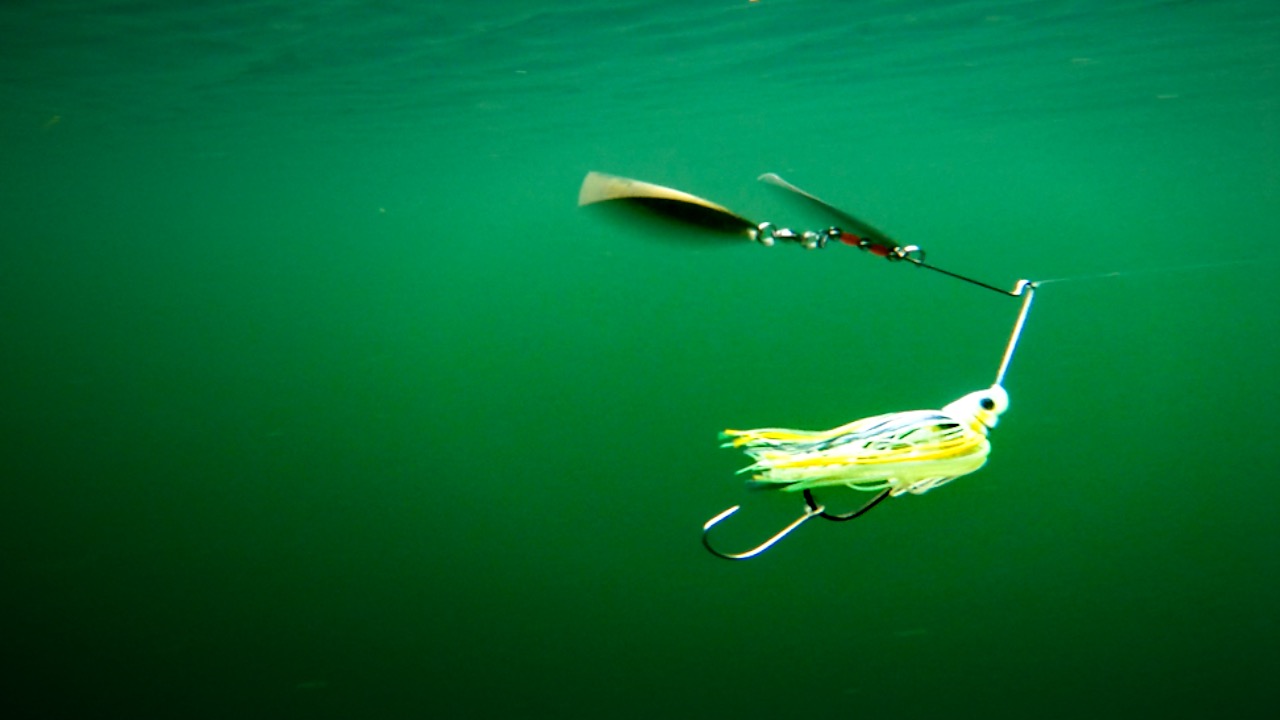Wired2fish caught up with Bill Lowen for a lesson on finding and catching shallow water smallmouth bass using spinnerbaits during the fall. While deeper offshore structure makes prime smallmouth habitat, the shallows always hold fish, particularly during the spring and fall. A fast-moving spinnerbait bulged just below the surface is tailor-made to imitate a small school of baitfish and excels at combining vast flats and triggering reaction strikes. *Product links at the bottom.
Here are Lowen’s 6 tips to dial the bite:
- Burn (speed reel) spinnerbaits just under the surface. Bass in clear water feed by sight — a fast retrieve prevents fish from inspecting the bait and forces a reaction strike. It’s also among the best methods for combining vast expanses of water in search of scattered bass.
- Select a heavy-wire spinnerbait with thin willow leaf blades. Speed combined with the aggressive nature of smallmouth requires the use of a beefy spinnerbait. Lowen favors a heavier-gauge wire, yet paired with thinner blades built for minimal water resistance. You get the ability to burn yet withstand repeated fish catches without mangling your wire.
- Always use a trailer hook. A high-speed retrieve means that bass are slashing at a profile, drawn by flickering blades and surface disturbance. Without a distinct target, rigging a trailer hook can increase hookups by 50% or more. Don’t fish without one!
- Target transition areas. Areas of bottom composition change such as rock to gravel or gravel to grass congregate baitfish and function as feeding highways for fall bass. Use your fish finders or naked eye to target these productive areas.
- Locate current areas. Current flow can be river or wind-induced — either way, it can stack fish in specific areas, particularly around points, inside corners, and islands.
- Focus casts around any available cover. Cover elements like wood, rock, or grass, especially when combined with current-induced transition areas, are excellent spots for loads of fall smallmouth.
TACKLE & EQUIPMENT
- BAIT – Strike King Burner Spinnerbait, 1/2-ounce
- REEL – Team Lew’s Hyper Mag Speed Spool SLP Casting Reel, 7.5:1
- ROD – Lew’s Team Signature Series Casting Rod, 7’3″ MH
- LINE – Seaguar InvizX Fluorocarbon, 20lb-pound
- BOAT – Xpress X21 Pro Bass Boat












